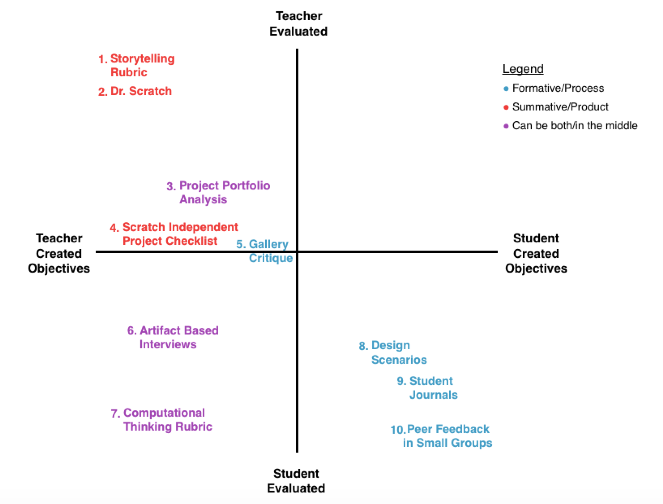Beyond the Rubric: Methods for Assessing Scratch Projects
So you’ve decided to integrate Scratch programming into your curriculum. Fantastic! But how do you assess your students' learning? What higher-order cognitive skills and transferable learning is Scratch supporting? Did planned learning objectives impact a student’s ability to collaborate, plan, reflect, and communicate? Below (click the link) are a variety of different assessment methods that we’ve compiled that highlight some different ways you can assess Scratch projects.
Before you dive in, it might be helpful for us to explain how we have organized these methods. In the graphic below, the vertical axis shows who’s leading the bulk of the evaluation: Are students evaluating their own work or is the teacher the sole evaluator? The horizontal axis shows who created the learning objectives of a project: a teacher, students or both. Finally, the methods are color coded: blue if they are process oriented (formative), red if they lean more towards evaluating the end product (summative), or purple if they could function as both.

While we do love rubrics, we hope this allows you to consider the various roles both teachers and students can play in assessing Scratch projects, and the variety of tools to assess both the end products and the overall learning process.

